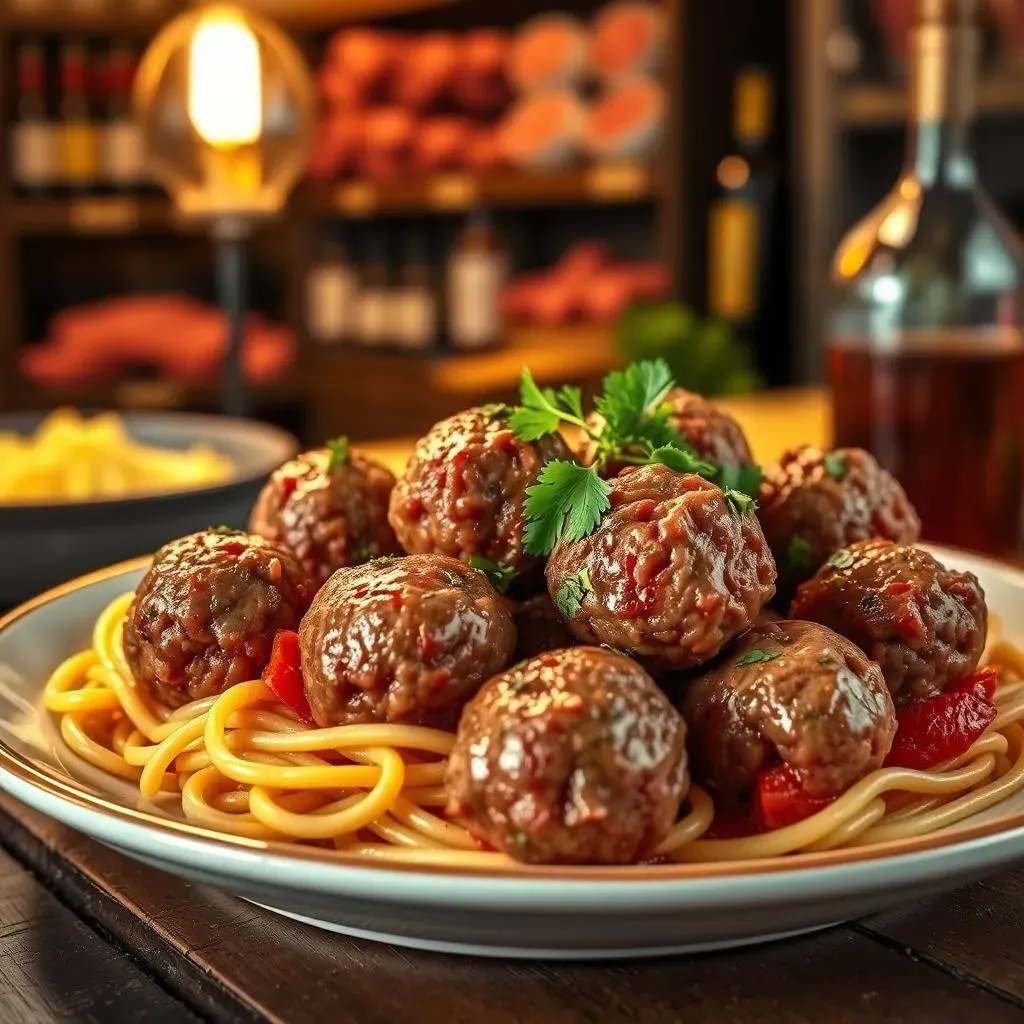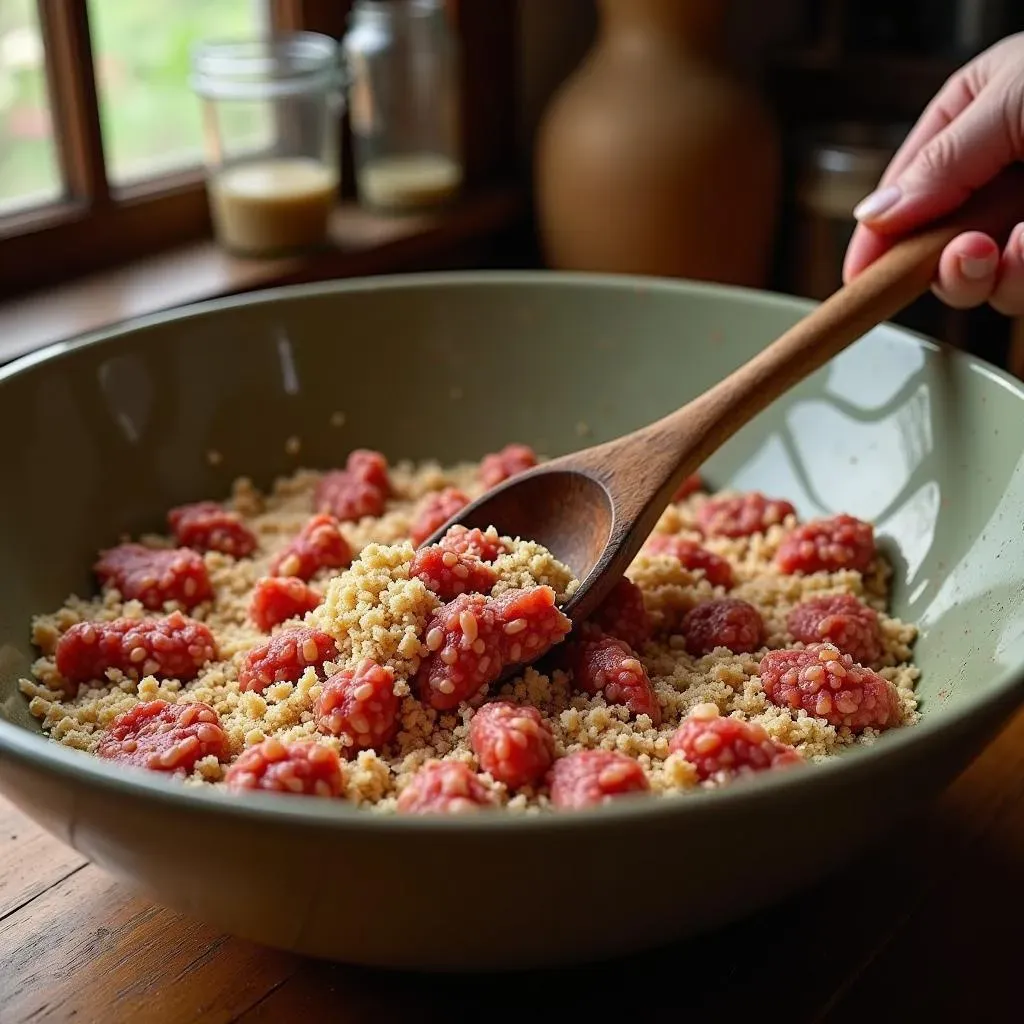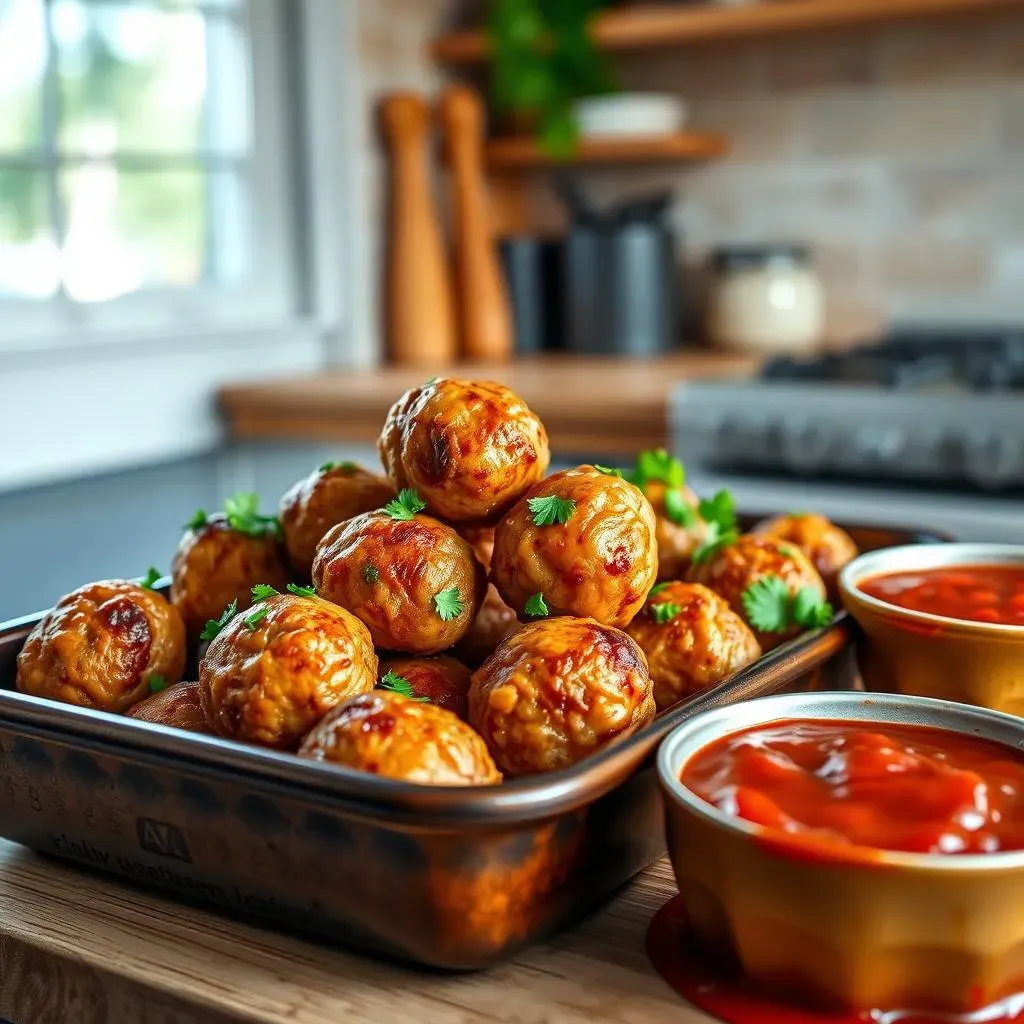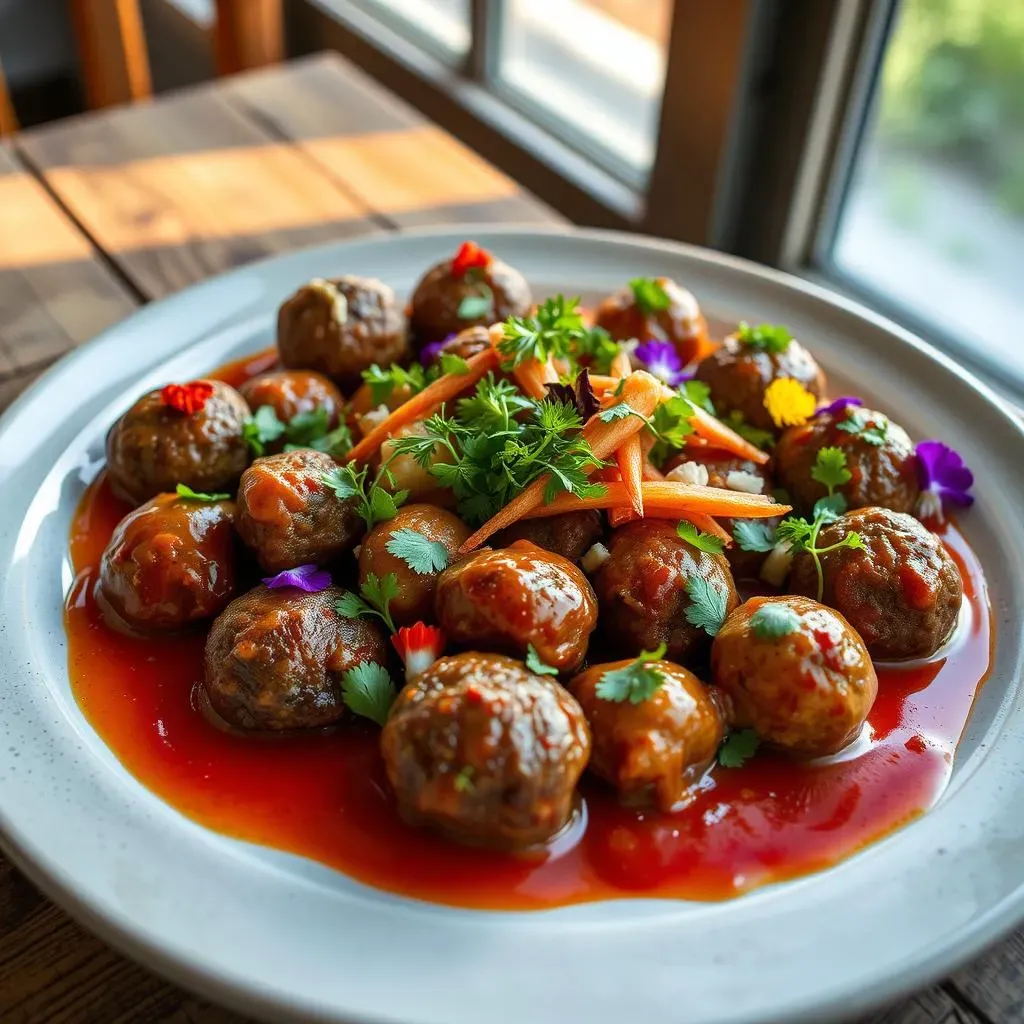Table of Contents
Ready to elevate your weeknight dinners? Forget those bland, frozen meatballs! This article is your ultimate guide to creating juicy, flavorful, oven-baked ground beef meatballs that will have everyone begging for seconds. We'll walk you through every step, from selecting the perfect ground beef to mastering the art of baking for perfectly browned, tender results. Get ready to discover the secrets to a truly exceptional ground beef meatball recipe oven-baked to perfection. We'll cover essential ingredients and techniques, explore different baking methods to ensure your meatballs are cooked evenly, and even share creative recipe ideas to take your meatballs beyond the ordinary. Whether you're a seasoned cook or a kitchen newbie, this comprehensive guide will equip you with the knowledge and confidence to make the best meatballs you've ever tasted. So, grab your apron and let's get started on this delicious adventure! Prepare to be amazed by how simple it is to create restaurant-quality meatballs right in your own kitchen. This isn't just a recipe; it's a journey to meatball mastery. Let's make some magic happen!
Choosing Your Ground Beef: A Meatball Masterclass

Choosing Your Ground Beef: A Meatball Masterclass
The Beefy Breakdown: Understanding Ground Beef Types
Choosing the right ground beef is crucial for juicy, flavorful meatballs. Think of it like this: you wouldn't build a house with weak bricks, right? Similarly, using inferior ground beef will result in dry, crumbly meatballs. Your best bet is to look for ground beef with a higher fat content – around 80/20 or even 70/30. The fat renders during cooking, keeping the meatballs moist and tender. Leaner ground beef (like 90/10) can result in dry meatballs, so avoid those unless you're aiming for a very low-fat option. Don't be afraid of the fat; it's your friend in this recipe!
For a richer, more complex flavor, consider blending different types of ground beef. For example, combining ground chuck (a good all-around choice) with a bit of ground sirloin can add a nice depth of flavor. You could also check out our beef vs chicken meatballs post for more ideas. Experiment and find what suits your taste buds best. Remember, a little fat goes a long way in creating perfectly moist and tender meatballs. It's all about balance!
Ground Beef Type | Fat Content | Meatball Suitability |
|---|---|---|
Ground Chuck | 80/20 | Excellent |
Ground Sirloin | 90/10 | Good (but may need added fat) |
Ground Round | 85/15 | Good |
Beyond the Basics: Sourcing Your Ground Beef
Where you buy your ground beef can significantly impact the quality of your meatballs. Opt for a reputable butcher or grocery store known for its fresh, high-quality meat. Look for ground beef that's bright red in color, not brown or grayish, which is a sign that it's not fresh. The meat should also smell pleasant and not have any off-putting odors. If something smells "off", don't hesitate to ask for a replacement. Trust your senses; they're your best allies in the kitchen!
Consider buying ground beef in larger quantities and freezing it in portions for future use. This can save you money in the long run and ensure you always have the perfect ingredients on hand for your next meatball masterpiece. This is especially useful if you enjoy making meatballs for spaghetti. Properly stored, ground beef can last for several months in the freezer. Just remember to thaw it completely before using it in your recipe.
- Choose a reputable source.
- Inspect the meat carefully for freshness.
- Buy in bulk and freeze for convenience.
Freshness is Key: Handling and Preparing Your Ground Beef
Once you've got your ground beef home, it's important to handle it properly to maintain its quality and prevent bacterial growth. Always wash your hands thoroughly before and after handling raw meat. Avoid leaving it out at room temperature for extended periods – aim to cook it within a couple of hours of purchasing. If you're not ready to cook it immediately, store it in the refrigerator at 40°F (4°C) or below. Never refreeze thawed ground beef.
Before using the ground beef, gently break it up with your hands or a spoon. Avoid overmixing, as this can make the meatballs tough. The key is to combine the ingredients just enough to ensure they're evenly distributed. Overmixing introduces extra air, leading to dry meatballs. Remember, gentle handling is crucial for achieving perfectly tender meatballs. Consider trying out our recipe for the best beef meatballs which emphasizes this gentle approach.
The Perfect Meatball Mix: Ingredients and Techniques

The Perfect Meatball Mix: Ingredients and Techniques
Beyond the Beef: Essential Ingredients
Okay, so we've got the ground beef sorted. Now, let's talk about the supporting cast – the amazing ingredients that will transform your simple ground beef into flavor explosions! Think of this as your meatball's entourage – they need to be just as awesome as the star of the show. Breadcrumbs are a must; they add structure and texture, preventing your meatballs from turning into mush. I usually go for panko breadcrumbs for that extra crispy touch. But feel free to experiment! Next up, we have eggs, the binding agents that hold everything together. Don't skip them!
Then there's the flavor brigade: garlic, onion (both add incredible umami!), and herbs like parsley or oregano. Don't be shy with the seasoning! Salt and pepper are essential, of course, but consider adding a touch of red pepper flakes for a little kick or some Parmesan cheese for a salty, tangy boost. For a deeper flavor profile, consider adding a splash of milk or even Worcestershire sauce. Remember, this is your chance to unleash your inner chef and experiment with different flavor combinations. You can even check out our Italian sausage meatball recipe for inspiration! The possibilities are endless!
- Panko Breadcrumbs
- Eggs
- Garlic
- Onion
- Parsley/Oregano
- Salt & Pepper
- (Optional) Red Pepper Flakes
- (Optional) Parmesan Cheese
- (Optional) Milk/Worcestershire Sauce
Mixing Magic: Techniques for Perfect Meatballs
Now comes the fun part: combining all these glorious ingredients to create the perfect meatball mixture! But be warned: this isn't a time for brute force. Gentle is the name of the game here. Overmixing introduces too much air, which leads to dry, crumbly meatballs. We want tender, juicy perfection, remember? So, gently combine the breadcrumbs, eggs, and seasonings in a large bowl. Then, add the ground beef and mix it in using a spoon or your hands—but remember, gently, gently!
Once everything is evenly distributed, but not overmixed, you can start shaping your meatballs. I like to use a small ice cream scoop for uniform size and ease. This ensures even cooking and beautiful presentation. If you don't have a scoop, simply roll the mixture into 1-1.5 inch balls. Remember, consistency is key. Once you've shaped your meatballs, you're ready for the oven! Before you proceed, take a look at our best ground beef meatball recipes for some additional inspiration and tips on achieving the perfect texture.
Step | Action | Tip |
|---|---|---|
1 | Combine dry ingredients | Don't overmix! |
2 | Add wet ingredients | Gently incorporate. |
3 | Add ground beef | Mix until just combined. |
4 | Shape meatballs | Use a scoop for consistency. |
Baking to Perfection: Oven Techniques and Timing

Baking to Perfection: Oven Techniques and Timing
The Oven's Embrace: Baking Methods and Temperatures
Now, the moment of truth: baking your meatballs to perfection! The oven is your ally here, transforming those humble balls of ground beef into golden-brown, juicy delights. Preheat your oven to 375°F (190°C). This temperature is ideal for achieving a beautiful crust while ensuring the inside stays moist and tender. You can experiment with slightly higher temperatures (up to 400°F or 200°C) for a crispier exterior, but keep a close eye on them to prevent burning. Remember, every oven is different, so keep an eye on your meatballs to find what works best in your kitchen. Don't forget to check out our oven-baked beef meatballs recipe for more detailed instructions and visual guidance.
Arrange your meatballs in a single layer on a baking sheet lined with parchment paper or foil. This prevents sticking and makes cleanup a breeze. Spacing them evenly allows for even browning on all sides. Avoid overcrowding the pan; if necessary, bake them in batches. For extra flavor, you can add a touch of olive oil to the pan before adding the meatballs. This will help them brown beautifully. If you prefer a richer flavor, try baking them on a wire rack to allow air circulation. It's all about achieving that perfect balance between a crispy exterior and a juicy interior. This might be different for different ground beef meatball recipes.
- Preheat oven to 375°F (190°C).
- Line baking sheet with parchment paper or foil.
- Arrange meatballs in a single layer.
- Bake until cooked through and browned (approx. 20-25 minutes).
Timing is Everything: Knowing When Your Meatballs Are Done
How do you know when your meatballs are perfectly cooked? It's not just about the color; it's about the internal temperature. Use a meat thermometer to ensure they reach an internal temperature of 160°F (71°C). This guarantees they're fully cooked and safe to eat. Don't rely solely on visual cues; a meat thermometer is your best friend for safe and delicious meatballs. Overcooked meatballs will be dry and tough, while undercooked ones are a food safety hazard. So, invest in a good meat thermometer and use it every time you bake meatballs. It's a small investment that pays off in big flavor and peace of mind.
The baking time will vary depending on the size of your meatballs and your oven. Smaller meatballs will cook faster than larger ones. Start checking them around 20 minutes, using your trusty meat thermometer. If they're not quite done, continue baking in 5-minute increments until they reach the desired temperature. Once they're cooked through, remove them from the oven and let them rest for a few minutes before serving. This allows the juices to redistribute, resulting in even more tender and flavorful meatballs. For a detailed guide on achieving the perfect internal temperature, check out our best baked beef meatball recipe, where we highlight the importance of using a meat thermometer.
Meatball Size (inches) | Approximate Baking Time (minutes) |
|---|---|
1 | 20-25 |
1.5 | 25-30 |
2 | 30-35 |
Beyond the Basics: Creative Meatball Recipes and Serving Suggestions

Beyond the Basics: Creative Meatball Recipes and Serving Suggestions
Flavor Adventures: Beyond the Classic
Once you've mastered the basic ground beef meatball, it's time to get creative! Think of your meatballs as a blank canvas, ready for your culinary masterpieces. Experiment with different herbs and spices to create unique flavor profiles. A dash of smoked paprika adds a smoky depth, while a sprinkle of cumin introduces a warm, earthy note. For a zesty twist, try adding some chopped fresh cilantro or a squeeze of lime juice. Don't be afraid to experiment; that's where the magic happens! For even more inspiration, consider checking out our cheesy beef meatballs recipe for some seriously delicious ideas.
Incorporate different cheeses into your meatball mix for a burst of flavor and texture. Feta cheese adds a salty, tangy kick, while mozzarella provides a creamy, melty goodness. Grated Parmesan cheese is a classic choice, adding a salty depth to the meatballs. You can also experiment with gourmet cheeses like Gruyere or Asiago for a more sophisticated touch. Remember, the possibilities are endless! The key is to find combinations that excite your taste buds. Why not try adding some finely diced vegetables like mushrooms or zucchini to your meatball mix for a healthier and more flavorful option? Explore our beef porcupine meatballs recipe for a fun and delicious twist.
- Smoked Paprika
- Cumin
- Cilantro
- Lime Juice
- Feta Cheese
- Mozzarella Cheese
- Parmesan Cheese
- Gruyere Cheese
- Asiago Cheese
Serving Suggestions: Beyond Spaghetti and Meatballs
Let's face it: spaghetti and meatballs is a classic for a reason. But your perfectly baked ground beef meatballs deserve to shine in more than just one dish. Think outside the pasta box! Serve them as appetizers, nestled on a bed of creamy polenta or alongside a vibrant salad. They're also fantastic in subs or sliders, adding a juicy, flavorful punch to your favorite sandwich. For a truly impressive presentation, try skewering them with cherry tomatoes and basil leaves for a beautiful appetizer. The possibilities are as vast as your imagination!
Consider using your meatballs as a base for other dishes. Add them to soups and stews for a hearty, protein-packed meal. They can also be incorporated into casseroles or pasta bakes, adding a delicious meaty element to your favorite recipes. For a truly unique twist, try using your meatballs in a hearty meatball pizza topping. The possibilities are endless! Don't be afraid to experiment and find new and exciting ways to enjoy your perfectly baked ground beef meatballs. For more creative ideas, take a look at our ultimate beef meatball casserole recipe – a true testament to meatball versatility!
Serving Style | Description |
|---|---|
Appetizer | Serve with polenta or salad. |
Sandwich | Use in subs or sliders. |
Soup/Stew | Add to your favorite recipe. |
Casserole | Incorporate into pasta bakes. |